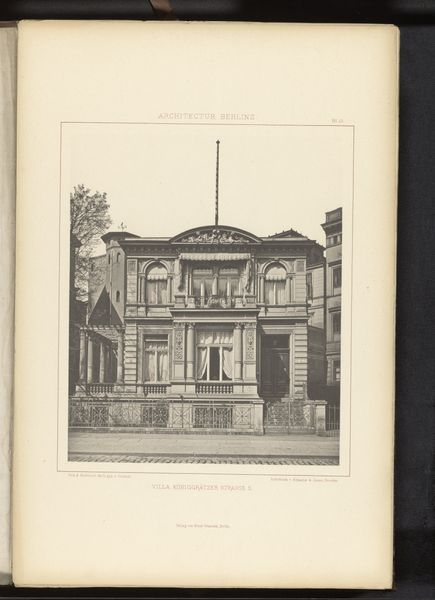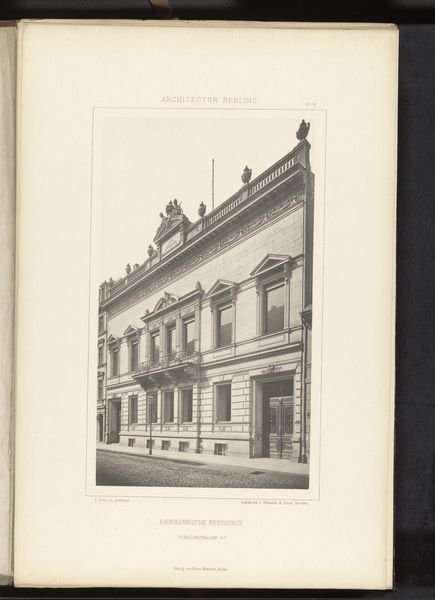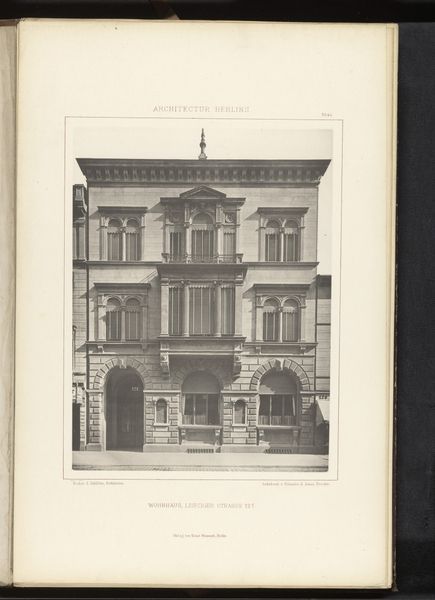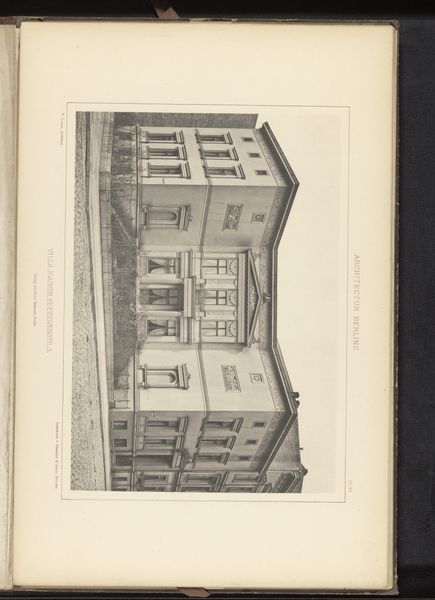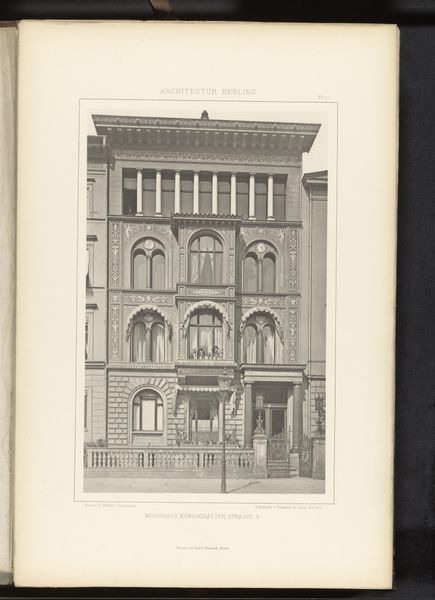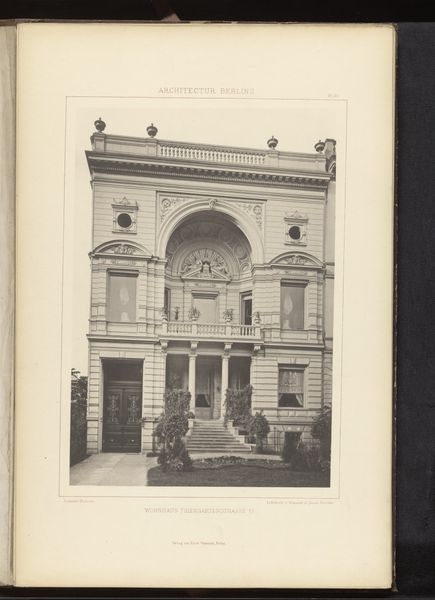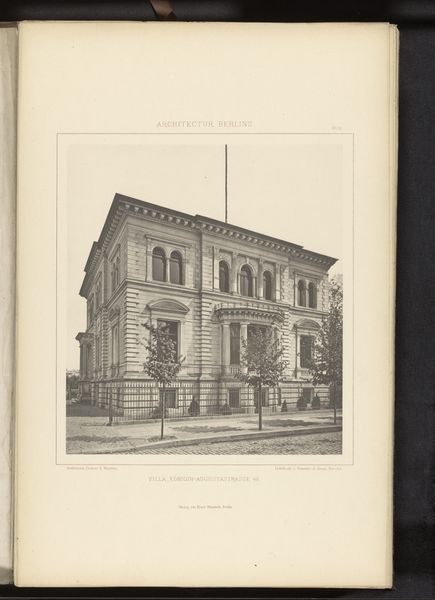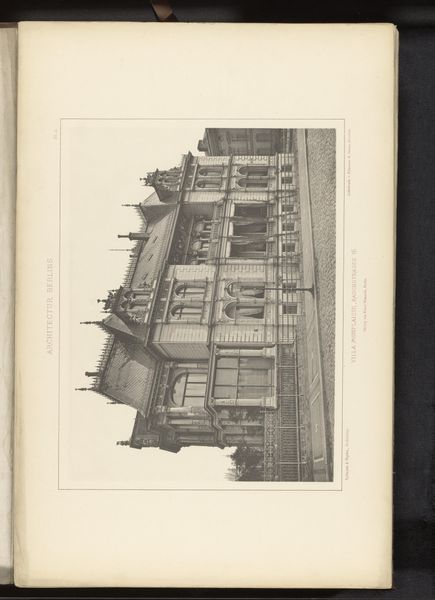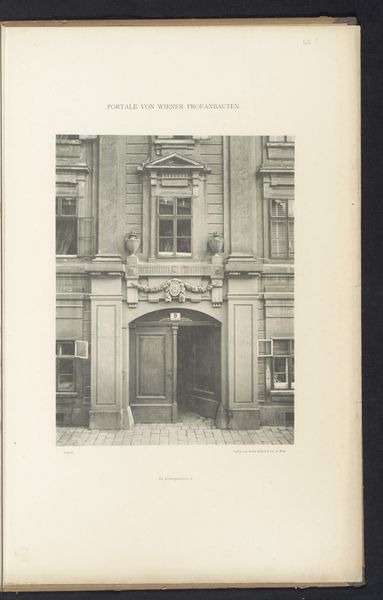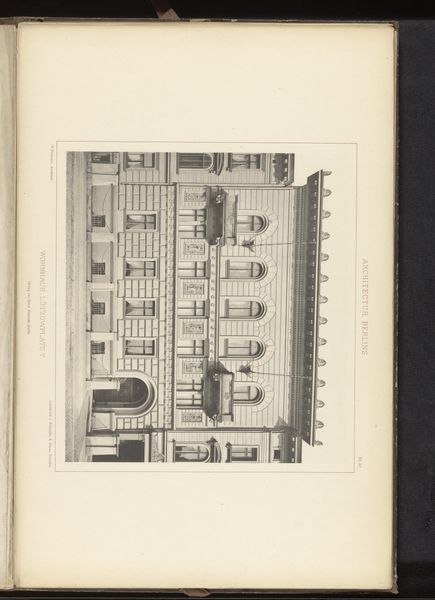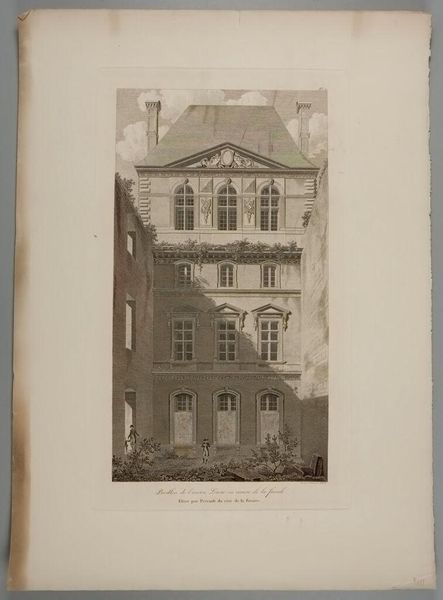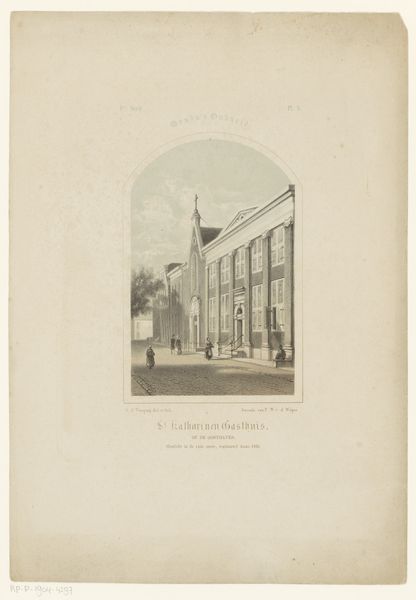
Gezicht op een villa aan de Rauchstrasse 19 in Berlijn, Duitsland before 1877
0:00
0:00
anonymous
Rijksmuseum
Dimensions: height 280 mm, width 233 mm
Copyright: Rijks Museum: Open Domain
Curator: Oh, there’s something so still and proper about this one, isn't there? Editor: Indeed. This print, held here at the Rijksmuseum, presents a "View of a Villa on Rauchstrasse 19 in Berlin, Germany." Dating from before 1877, it's rendered with incredible precision, a style leaning toward realism. The building's described as neoclassical, from what I gather. Curator: Well, "stark" might be another word for it. All straight lines and cobbled stone… I imagine someone very serious lived there. A banker, perhaps, with a penchant for perfectly symmetrical flower beds. Editor: Look at how the geometric forms interplay, though. The rectangular windows offset by that rounded arch above, that delightful frieze. The engraver paid meticulous attention to texture—observe the differences between the brick, the stone, and the leaves of the trees on the side. This artwork illustrates a mastery of line and form! Curator: Right, I get that—it’s technically impressive, for sure. I suppose the realism tries to let the villa speak for itself. It just lacks... soul? Makes me think about how private lives remain obscured despite these depictions of domestic grandeur. Editor: Privacy is a poignant concept. It’s important to consider the purpose. The cityscapes became a source of cultural identity at the time; how we now define nationhood became codified. Consider this: even an anonymous artist engraves a vision of space. Curator: Absolutely. Makes you wonder, doesn't it? Who walked those streets? What stories did that house hold? Sometimes the things that are left unsaid whisper the loudest. Editor: Precisely. Through its restrained formality, the engraving opens space for considerations, about form, urban growth, representation, identity—perhaps that’s the source of its soul.
Comments
No comments
Be the first to comment and join the conversation on the ultimate creative platform.
